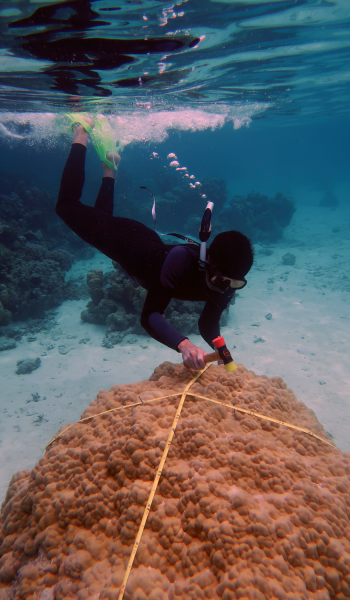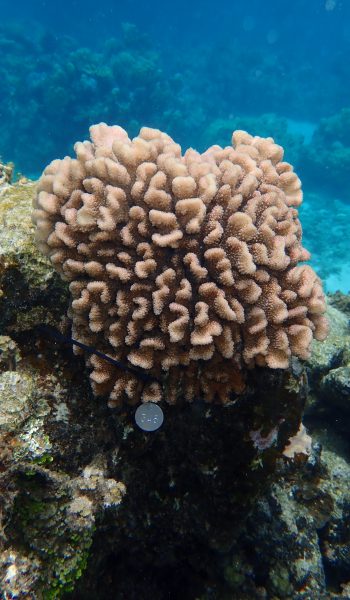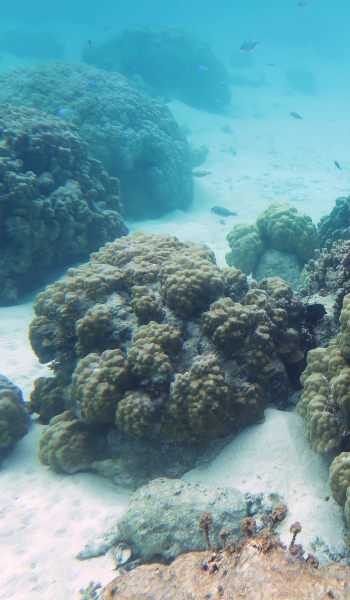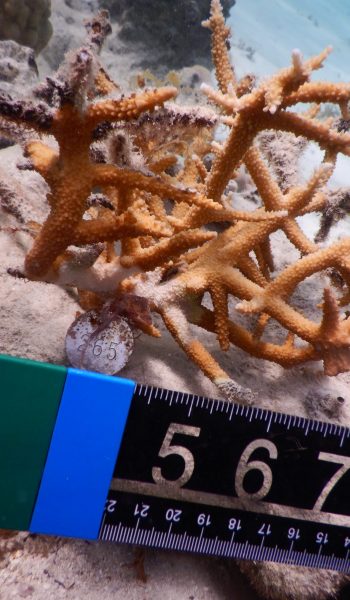Six weeks following the end of the first trip, the team was headed back to Moorea for its second expedition at the end of February.
OBJECTIVE
The major goal of the second E5 Coral expedition was to continue assessments of the environmental conditions and the coral colonies at our 3 field sites.
A smaller set of the team consisting of 3 people travelled from Miami and Providence, arriving back to the Gump Field Station on February 28, 2020. Accomplishing the second expedition with fewer people was made possible due to the knowledge and experience gained during the first trip.
TEAM
Juliet Wong (FIU-Postdoc), Dennis Conetta (URI-GS), Emma Strand (URI-GS)
DATE
February 2020
Revisiting the field sites
and the start of the pandemic in French Polynesia
Upon arrival, the team was met with intense storm conditions for the first several days. Although the heavy rains and rough conditions kept us out of the water, they provided the opportunity to get everything set up and organized in the lab.
As soon as the weather cleared, the team enthusiastically headed out into the field with help from colleagues at the Centre de Recherches Insulaires et Observatoire de l’Environnement (CRIOBE). All 3 field sites were visited in 3 consecutive days during which time the tagged coral colonies were photographed and sampled. All three species of coral and one algal species were sampled and environmental loggers were brought back to the lab for data collection.
The team was able to complete the goals of the trip thanks to plenty of planning and organization. Despite this preparation, we were still met with the unexpected. As we were wrapping up our successful trip, the news came that the World Health Organization had just declared the COVID-19 outbreak a pandemic.
Fortunately, with the data collected and samples secured, the team was able to safely travel back home.
5
14
40
Sample preservation, processing, and lab analyses.
Small pieces of each coral were sampled exactly like the January trip and brought back to the laboratory and tank system at Gump. The team was able to start collecting respiration and photosynthesis data on the fragments kept alive, and preserve the smaller fragments that will be used for molecular analysis. Juliet, Dennis, and Emma got into a smooth rhythm of monitoring the respiration equipment setup and processing other physiological data in their spare time. The field station was pretty quiet this past March, but the team enjoyed chatting with other visiting scientists and sharing ideas about research after sample processing days.







